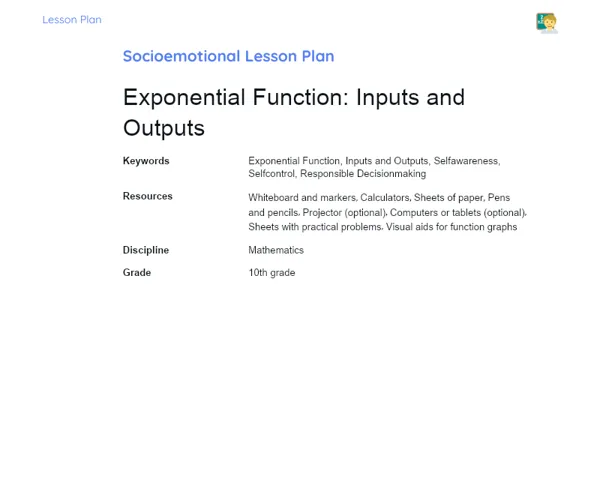Lesson Plan | Active Methodology | Clock Reading
| Keywords | Clock Reading, Digital Clocks, Analog Clocks, Hour Hands, Minute Hands, Second Hands, Practical Activities, Spatial Reasoning, Temporal Reasoning, Teamwork, Communication, Everyday Use |
| Necessary Materials | Digital clocks, Analog clocks, Cardboard clock for simulation, Timer or clock to manage discussion time, Materials for notes (paper, pen) |
Premises: This Active Lesson Plan assumes: a 100-minute class duration, prior student study both with the Book and the beginning of Project development, and that only one activity (among the three suggested) will be chosen to be carried out during the class, as each activity is designed to take up a large part of the available time.
Objective
Duration: (5 - 10 minutes)
The objective stage sets the tone for the lesson, ensuring that both the teacher and students share a clear understanding of what is expected by the session's end. By explicitly outlining our goals, students can concentrate better on the practical activities and discussions, thereby maximizing their learning experience. Here, the emphasis is on not only teaching students how to read the time but also helping them appreciate the concepts underlying various time representations on digital and analog clocks, equipping them for real-world and educational contexts.
Objective Utama:
1. Instruct students on how to read and interpret time accurately on both digital and analog clocks, including the identification of hour, minute, and second hands.
2. Enhance spatial and temporal reasoning skills, which are crucial for grasping how the passage of time is physically represented in our daily lives.
Objective Tambahan:
- Promote collaboration and open communication among students during hands-on activities, reinforcing learning through the sharing of ideas and insights.
Introduction
Duration: (15 - 20 minutes)
The introduction aims to engage students and connect previously learned content with practical and relatable situations. The proposed challenges encourage students to think critically about the significance of reading clocks in both practical and theoretical scenarios while preparing them for classroom activities. The context highlights the topic's historical importance and applicability, boosting students' interest and comprehension of the relevance of what they are about to learn.
Problem-Based Situation
1. Imagine you are organising a birthday party and need to coordinate various activities, like the arrival of guests and singing 'Happy Birthday', accurately. How will being able to read the time on digital and analog clocks aid you in this planning?
2. Think of a scenario where it is crucial to know exactly when to administer medication. Why is it important to understand how clocks function and what role do the hour, minute, and second hands play in such a situation?
Contextualization
Reading clocks is an essential skill applicable to various daily scenarios, from arriving on time for appointments to ensuring tasks are executed precisely. Interestingly, clocks have a rich history dating back thousands of years, evolving from simple sundials to today's sophisticated atomic clocks. Understanding how time is represented in different clock formats not only helps in managing daily life but also deepens our appreciation of human creativity throughout history.
Development
Duration: (70 - 75 minutes)
This stage seeks to apply the concepts of reading digital and analog clocks engagingly and practically, fostering peer collaboration to tackle problems and conquer challenges. Through the proposed activities, students will have the chance to reinforce their earlier learning while honing logical reasoning, teamwork, and communication skills. Each activity is designed to be highly interactive and enjoyable, ensuring effective and memorable learning experiences.
Activity Suggestions
It is recommended that only one of the suggested activities be carried out
Activity 1 - Mission Magic Clock
> Duration: (60 - 70 minutes)
- Objective: To cultivate skills in reading digital and analog clocks in a fun and collaborative manner, emphasizing the significance of accuracy when interpreting time.
- Description: Students will embark on a quest to solve a mystery involving a magic clock that foretells the future, but only if the time is read correctly. The clock will be represented by a large cardboard model, where students can manually adjust the hands to simulate different times.
- Instructions:
-
In small groups, students will receive a 'logbook' filled with enigmas needing sequential resolution.
-
Each riddle will require students to set the magic clock to a specific time, using both digital and analog clocks.
-
Upon adjusting the clock, students will jot down the 'predictions' derived from the correctly set time.
-
Each correct prediction unlocks a new mystery to solve, continuing until the final riddle is resolved.
Activity 2 - Race Against Time
> Duration: (60 - 70 minutes)
- Objective: To practice reading and adjusting clocks in a competitive setup, encouraging quick thinking and precision, while fostering teamwork.
- Description: This activity creates a competitive environment where groups solve timed puzzles. Each puzzle can only be tackled once the correct time is set on a central clock, adjusted by each group.
- Instructions:
-
Students will be divided into groups and stationed at various puzzle locations.
-
Each station will feature a central clock that requires accurate time settings before the group can begin working on the puzzle.
-
Whichever group cracks the most puzzles within the time allocated wins the race.
-
For every puzzle solved, students will record the time the clock was set and when the puzzle was completed.
Activity 3 - Time Detectives
> Duration: (60 - 70 minutes)
- Objective: To enhance skills in clock reading and timing comprehension, as well as to nurture analytical and deductive abilities.
- Description: Students will don the hat of detectives to unravel a mystery tied to the correct order of events over a day, each marked by a particular time. They will use various clock types to gather clues and crack the case.
- Instructions:
-
Organised in groups, students will receive a 'crime map' detailing the sequence of events on the day of the crime, with each event linked to a specific time.
-
Using digital and analog clocks, groups must 'mark' the event times on the map, noting any inconsistencies discovered.
-
Following this, groups will share their observations and discuss discrepancies to build a theory about the day's events.
-
Each group will present its theory and reasoning, leading to a class discussion on the diverse approaches and solutions devised.
Feedback
Duration: (10 - 15 minutes)
This stage aims to give students an opportunity to reflect on their learning from practical activities and articulate their understanding, reinforcing the knowledge they’ve gained. The group discussion fosters communication and argumentation skills whilst allowing students to gain insights from their peers, thus enriching their learning experience.
Group Discussion
To kick off the group discussion, the teacher can prompt each group to share their discoveries and experiences, starting with a summary of how they engaged with clock reading across various activities. It’s advisable for the teacher to use a timer or clock to regulate speaking time for each group, ensuring equal participation. During the discussion, students should be encouraged to explain their reasoning for decisions made, as well as any obstacles encountered and their methods for overcoming them.
Key Questions
1. What were the main hurdles you faced while reading and adjusting the clocks during the activities, and how did you tackle them?
2. How can the skill of reading clocks be valuable in real-life situations based on today's learning?
3. Was there an activity you found particularly challenging or enjoyable? What made it so?
Conclusion
Duration: (5 - 10 minutes)
This stage seeks to reinforce learning, ensuring students have a clear and lasting grasp of clock reading concepts, while also recognizing the applicability of this knowledge in their lives. Summarizing and linking theory to practice strengthens students' memory and keeps their interest alive in the subject matter. The conclusion serves to reinforce the topic’s relevance, motivating students to apply their learnings in real-world situations.
Summary
In this concluding part of the lesson, the teacher will recap the main points discussed about clock reading, particularly highlighting the distinctions between digital and analog clocks. The concepts of hours, minutes, and seconds will be revisited, along with how these time units are depicted in both clock types.
Theory Connection
Today’s lesson aimed to connect theory with practice by employing enjoyable and challenging tasks to reinforce prior knowledge. Through various problem-solving situations and games, students could apply their understanding, showcasing the practical significance of mathematics in everyday scenarios.
Closing
Finally, the teacher will reiterate the importance of reading clocks in everyday life, stressing that this skill is vital for effectively organizing tasks and appointments. Additionally, how an understanding of clocks aids in both emergency and day-to-day situations will be discussed, enhancing students' time management and organizational skills.


